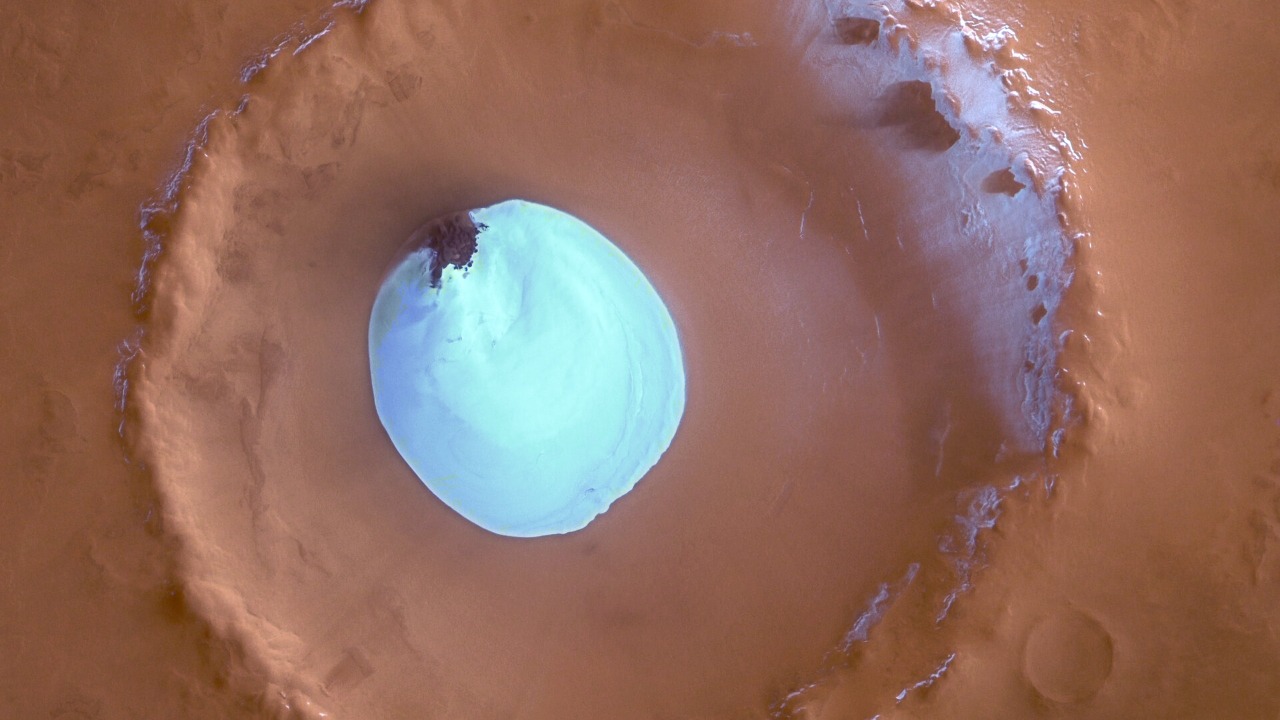
A groundbreaking study has revealed that ice on Mars could preserve traces of ancient life for up to 50 million years. This discovery offers new hope for detecting long-lost microbial remnants on the Red Planet. NASA’s Mars rover has uncovered findings that provide the strongest hints yet of potential signs of ancient life, reinforcing the idea that ice could be a key repository. The preservation capability of Martian ice suggests it may be hiding living microbes or alien life for millions of years, making it a prime target for future exploration.
The Science of Ice as a Life Preserver on Mars
The unique properties of Martian ice, such as its low temperatures and minimal radiation exposure in certain deposits, enable the long-term storage of biological traces. These conditions are crucial for preserving potential signs of life for up to 50 million years. Modeling studies have shown that microbes could remain viable or detectable within ice layers, contrasting sharply with the degradation that occurs on the planet’s surface. The chemical stability of ice plays a significant role in shielding organic molecules from Mars’ harsh environment, employing mechanisms like cryogenic entrapment to protect these traces over geological timescales. This insight into the preservation potential of Martian ice is supported by research indicating that Mars’ ice could hide living microbes for millions of years.
Key Findings from NASA’s Mars Rover Missions
NASA’s Mars rover missions have been pivotal in advancing our understanding of potential ancient life on Mars. The rover’s detection of potential biosignatures in rock samples marks the strongest hints yet of ancient life, as reported on September 10, 2025. These findings are significant because they suggest that organic compounds identified in ice-adjacent terrains could be linked to broader evidence of past habitability. The rover’s instruments have been crucial in identifying these compounds, providing a clearer picture of the planet’s history and its potential to harbor life. The mission’s exploration of locations like Jezero Crater has been instrumental in these discoveries, emphasizing the relevance of ice-based preservation in the search for ancient life. For more details on these findings, see the PBS report.
Why Targeting Ice is Essential for Ancient Microbe Detection
Targeting ice on Mars is essential for detecting ancient microorganisms because ice offers superior preservation compared to soil or rock. Research published on October 17, 2025, supports the notion that ancient microorganisms are best sought in ice. Ice cores could reveal layered histories of microbial activity spanning millions of years, with Earth analogs providing examples of how such conditions could be adapted to Mars. Despite challenges like ice sublimation, subsurface or polar deposits mitigate these issues, preserving traces for extended periods. This makes ice a critical focus for future missions aiming to uncover the secrets of Mars’ past.
Implications for Future Mars Exploration and Life Search
The potential for Mars ice to preserve traces of ancient life for 50 million years heightens the urgency for sample-return missions focused on icy regions. This preservation window is crucial for astrobiological research, as it could redefine our understanding of Mars’ habitability. The possibility of hidden alien life in ice for millions of years underscores the importance of these missions. Planned NASA strategies, such as drilling into ice deposits, aim to access potentially viable microbes preserved over geological timescales. These efforts are vital for advancing our knowledge of life beyond Earth and are supported by studies highlighting the significance of Mars ice in preserving ancient life.
In conclusion, the discovery of Mars ice’s potential to store ancient life for millions of years opens new avenues for exploration and research. By targeting ice deposits, scientists can better understand the planet’s history and its capacity to support life. As we continue to explore Mars, these findings will guide future missions and shape our quest to uncover the mysteries of the Red Planet. For further insights into why Mars ice matters, refer to the Times of India article.